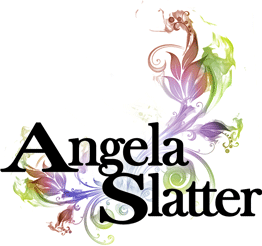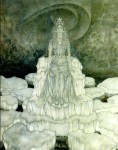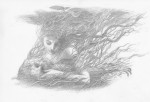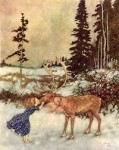Our lovely publisher Jo Fletcher of Jo Fletcher Books has the place of honour for the final Fearie Tales post – we launch the book on 2 November at WFC! – and she talks here about “The Snow Queen”, “Aschenputtel”, what happens when Alan Lee says he’ll illustrate your anthology, and why fairy stories will never die.
1. What is the fairy tale you remember most from your childhood – the one that made the biggest impression on you?
That’s an easy one: Hans Christian Anderson’s The Snow Queen – my grandfather had a magnificent book of Anderson’s fairy stories, illustrated by Edmund Dulac*, and whenever I stayed with him, he would read me one as a bedtime story and we would look at the illustrations together. I was so scared of the Ice Queen, but at the same time, she was so beautiful . . .
Interestingly, although I liked Gerda a lot – look how brave she was! – I always wanted to be the Snow Queen. Hm. Perhaps I shouldn’t mention that . . .
2. Is there a natural link, do you think, between fairy tales and horror? 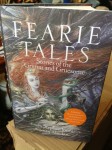
I think so. A lot of them started out as cautionary tales – if you do that, then this will happen to you, where this is something so awful it almost doesn’t bear thinking about it. The original tales are almost always pretty horrific; it’s mostly when the Victorians started to sanitise them to make them more suitable for delicate childish sensibilities that we start to see Sleeping Beauty awakened with a kiss instead of the more physical action in the original telling . . . In some versions of Cinderella the stepmother chops off one daughter’s toes and the other’s heel to try to force their feet into the slipper (I always wondered how the messenger never noticed all that blood and the prince had to be told to look!); in an Eastern version (I think Vietnamese), the misused daughter ends up boiling the evil stepsister alive, then feeds the equally evil stepmother her own daughter’s flesh. In the Grimm brothers’ version (Aschenputtel) the stepsisters are blinded after the wedding. It’s only in the Perrault version – the one most people know – that Cinderella graciously forgives her stepsister; it’s also in Perrault’s version that we have the pumpkin coach and the glass slipper; he tried to make it less grim and more glamorous, I guess. (As an aside, Marian Cox researched the story for the Folklore Society of Britain in the 1980s and came up with 345 variants, so there’s bound to be one that suits your tastes!)
The first Disney fairy tale, Snow White, didn’t shy away from the horror aspects (I remember being terrified of the witch queen) – but later Disney fairy tale adaptations were much less scary, and I think that’s a great shame. Most children like to be scared – and what good is a cautionary tale if the punishment doesn’t scare you witless? (‘Treat your sister nicely otherwise you’ll be turned into a talking mouse’ doesn’t carry quite the same threat-level as ‘otherwise you’ll be tarred and stuffed in a barrel full of nails and rolled down the street behind a pair of wild horses’, does it?)
3. What made you want to publish an anthology of this sort?
I’ve always wanted to publish something like this, and right now fairy tales are hot, in fiction and on film, so the timing is certainly right. When Steve came up with the idea of using the original tales alongside the re-imaginings, it all came together – and it seemed like an obvious choice to ask Alan Lee, creator, with Brian Froud, of the original Fairies illustrated book, to do the cover – then Alan suggested he might do some fillers, if he had time between his work on The Hobbit movies. Though it became increasingly clear he really didn’t have any spare time at all – they work you hard, these movie folks! – and we had just about decided we’d look at some of his back catalogue to illustrate the book, Alan begged an extra weekend, and next thing you know, Steve and I are having to spend an afternoon placing a dozen brand-new, all-original illustrations, and Nicola’s changing the cover at the last minute, as this collection of exceptional tales by exceptional writers from Britain, Australia, America and Europe is now illustrated by Alan Lee. What publisher wouldn’t want such a book on their list?
4. What do you think the fairy tale form offers to writers and readers?
I think readers like starting with a known tale and seeing how different writers can twist it into a whole new story. I also think it can be interesting seeing how to make cruel and unusual punishments to fit cruel and unusual crimes. Some writers revel in writing heroes, others prefer writing villains, and with fairy tales you can take your choice. And I think from a purely academic point of view, the fairy tale is the perfect way for a writer to work on perfecting characterisation and plot: your readers know where the story is going, and so you have to find new ways to make it interesting, to keep the readers’ attention. It can be a real challenge, but the rewards are ample.
5. Do you think readers will ever grow tired of fairy tales?
One-word answer: No! I think there are always new fairy tales to discover, and new versions of old favourites. And many people grow up having parents and grandparents reading these stories to them before learning to read them themselves. They lend themselves to illustration, as we’ve seen – and what better way to learn about morals?
* For the bibliophiles amongst you, the book, Stories from Hans Anderson, was published by Hodder & Stoughton in 1911; this is the second edition, from 1912 – and yes, I did manage to rub out the scribbles my wretched 2-year-old sister left on some of the pages before I rescued it from her! When I was 18 he gave me the actual book, and it’s remained one of my most treasured possessions.
